
A main source of business growth is through product innovation. New products often come from ideas. These are either new ideas or ideas for extension strategies for existing products or services. An idea is a plan, a scheme, method or a thought process. By their very nature new ideas are creative. They often provide solutions to problems. They help to meet the needs of customers and they also make products distinctive from those of the competition.
New ideas
If organisations are to succeed, they rely on a constant stream of new ideas. Ideas for new products can come from many places, such as market research or research and development. Ideas can also come from monitoring the actions of competitors or identifying a gap in the market. Organisations need a coherent process to develop potential new ideas. Many new ideas follow a process before being implemented. One process could be: ideas are generated, captured, screened and tested before being used. For many large organisations this is a constant cyclical process.
Developing products to meet customer needs
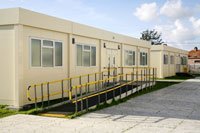
This case study illustrates how Portakabin , a manufacturer of factory produced buildings, has developed a range of new products called Essential Business Solutions (EBS). The purpose of EBS was to develop products that more closely meet the needs of its customers. Portakabin used market research, technological developments and feedback from customers to produce a product development strategy. Through product development Portakabin aims to meet the changing needs of its customers and increase the total spend per customer. Through offering more products and services it hopes to increase profits.
Portakabin provides its customers with modular buildings. These are buildings which are manufactured in one place and then transported to another to provide unique solutions to the accommodation needs of its customers. Examples include additional buildings for schools and hospitals. To closely meet the needs of its customers Portakabin hires or sells a range of products that are not simply buildings. They provide a variety of benefits beyond the basic accommodation needs. For example, Portakabin now supplies air conditioning units for the buildings that they construct. It provides products and services that complement the buildings and add value for each customer in order to serve their total product effectively.
Ansoff’s Matrix
Igor Ansoff was a Russian/American mathematician who applied his work to the world of business. His most famous work is the Ansoff Matrix. The purpose of this matrix is to help managers consider how to grow their business through existing or new products or in existing or new markets. In this way he was helping managers to assess the differing degrees of risk associated with moving their organisation forward.
Marketing strategies
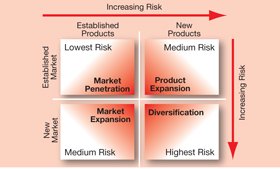
Ansoff’s matrix suggests four alternative marketing strategies which hinge on whether products are new or existing. They also focus on whether a market is new or existing. Within each strategy there is a differing level of risk. The four strategies are:
- Market penetration – This involves increasing market share within existing market segments. This can be achieved by selling more products/services to established customers or by finding new customers within existing markets.
- Product development – This involves developing new products for existing markets. Product development involves thinking about how new products can meet customer needs more closely and outperform the products of competitors.
- Market development – This strategy entails finding new markets for existing products. Market research and further segmentation of markets helps to identify new groups of customers.
- Diversification – This involves moving new products into new markets at the same time. It is the most risky strategy. The more an organisation moves away from what it has done in the past the more uncertainties are created. However, if existing activities are threatened, diversification helps to spread risk.
Selecting a strategy
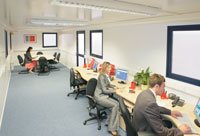
Portakabin focuses on its core activities. These are the activities that it has the most experience of and has a reputation for producing. For Portakabin this is factory manufactured buildings as this is what its reputation has been built around. To increase sales Portakabin decided that product development was the best marketing strategy to use. This strategy would allow Portakabin to provide more choices for its customers in order to meet their needs more closely. This strategy allowed Portakabin to improve its products with a medium level of risk.
Generating ideas through research
Market research

In order to develop new ideas for products and services Portakabin undertook some primary market research. This consisted of direct feedback from its customers. However, at the same time many changes were taking place in building legislation. For example, the Disability Discrimination Act 2005 required new buildings to provide improved access for people with disabilities. These changes and the primary market research helped Portakabin to create Essential Business Solutions (EBS). EBS was developed to meet customer needs for additional services which Portakabin had established there was a gap in the market for through its market research.
Identifying what customers want
Portakabin commercial staff were constantly asked for extra services such as air conditioning. This is a good example of Ansoff’s new product development which extended provision within its existing market. As a building supplier it soon realised that customers expected their wider customer needs to be met. Customers required more than just a building shell, they also wanted a range of services that complemented the building and produced ‘ready to go’ working environments.
The creation of EBS helped Portakabin to identify everything that its customers required in order to have a complete quality working environment. It recognised that a modern building is more than simply a structure. An environment needs to be comfortable and productive. There needs to be furniture, climate control, heating, security, access ramps as well as all of the electrics and cabling.
Developing a total solution
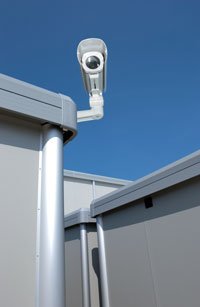
Portakabin therefore realised there was a gap in the market as there was no one single supplier that could offer a complete working environment. To meet this EBS helped to create the following range of provisions:
- Total solutions that included product management that helped customers with planning permission, ground works and service connections for a new modular building.
- Aircare to provide environmentally friendly internal climate control with low running costs.
- Access for those organisations requiring ramps and steps.
- Datakom such as cabling and networks that can be plugged into.
- Protecta such as fire and security systems.
- Interiors with furniture and space planning services.
- Optional extras to provide the finishing touches including floors and blinds.
Analysis and development
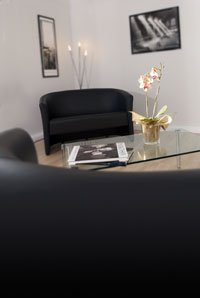
Each of the elements of EBS served two purposes.
- Firstly, it strengthened how customers thought about the building as there were more options available. This helped make the Portakabin total product approach to its buildings become distinctive in the minds of customers. This is because they saw EBS as a one-stop-shop for all of their needs.
- EBS also meant that customers no longer had to source additional services from other suppliers. This is an advantage for customers as there will be no additional costs or time outlay and Portakabin can issue one invoice for the whole finished product.
Cost advantages arise from aspects such as time saved in negotiating deals with several suppliers and the logistics involved in determining schedules when all involved parties need to be on site. This is done automatically by Portakabin.
What drives product development?
The new product development strategy was driven by a number of processes:
- primary market research – receiving direct feedback from existing customers on what additional services they wanted to have
- concept development and secondary market research – generating new ideas using commercial and marketing input on what services prospective customers might like to have and then testing these concepts with customers and prioritising the launch of the most liked concepts. The aim of this total product approach is to offer all clients every service they can associate with hiring a new building, and hence generate extra turnover and profit.
Testing and launch
Testing

All of the elements of the Portakabin products were sourced from high quality suppliers. They were then tested within Portakabin buildings. Testing enables materials and products to be evaluated for their worth and performance. Testing involved the following three stages.
- Developing prototypes. These are unique products that are evaluated for their performance. For instance, different types of air conditioning units were presented to customers in order to obtain their feedback and improve the final offering.
- Assessing the overall customer proposition. This is finding out how well the product will meet customer requirements. Elements of EBS that proved to be popular with customers were developed and made better. For example the furniture was initially very functional and basic. Customer research revealed the need for higher quality furniture and a space planning service. This was introduced and the service was renamed from simply ‘Furniture’ to ‘Interiors’ to more effectively convey the proposition.
- Assessing the overall satisfaction to the total product solution. This involved undertaking regular customer satisfaction interviews which showed improved customer satisfaction scores, in part resulting from the total EBS service solution, from 8.2 in 2003 to 9.2 in 2011.
Launch
The launch is usually considered to be the most important day for any new product. To support the launch a number of promotional materials were developed. This helped to get the key messages across. A number of methods were used to communicate with potential customers. These included:
- brochures
- direct e-mail
- the use of direct mail
- creating appropriate materials for the web
- datasheets.
The range of promotions used helped to establish the total product concept provided by Portakabin for the marketplace. Portakabin did this by targeting:
a) new prospects who were interested in hiring a building but had not really thought about all of the different services, such as, data cabling and fire security systems that they might require.
b) existing customers who had already hired a building and who might be interested in additional services.
Conclusion
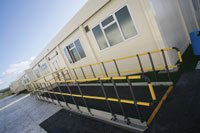
Portakabin has seen a steady growth in take up of EBS. From their introduction in 2001 until today, 2011, nearly 50% of buildings hired by Portakabin include EBS.
EBS now accounts for a substantial proportion of the turnover of the hire business. It has also enhanced the image of Portakabin as a ‘total solutions’ business that can provide high levels of customer satisfaction and customer recommendation – 90% of today’s customers would recommend Portakabin to a colleague or friend.
Portakabin continues to generate new ideas and research new EBSs with customers so that the organisation can provide an ever improving means of satisfying their needs.Portakabin | Achieving growth through product development
